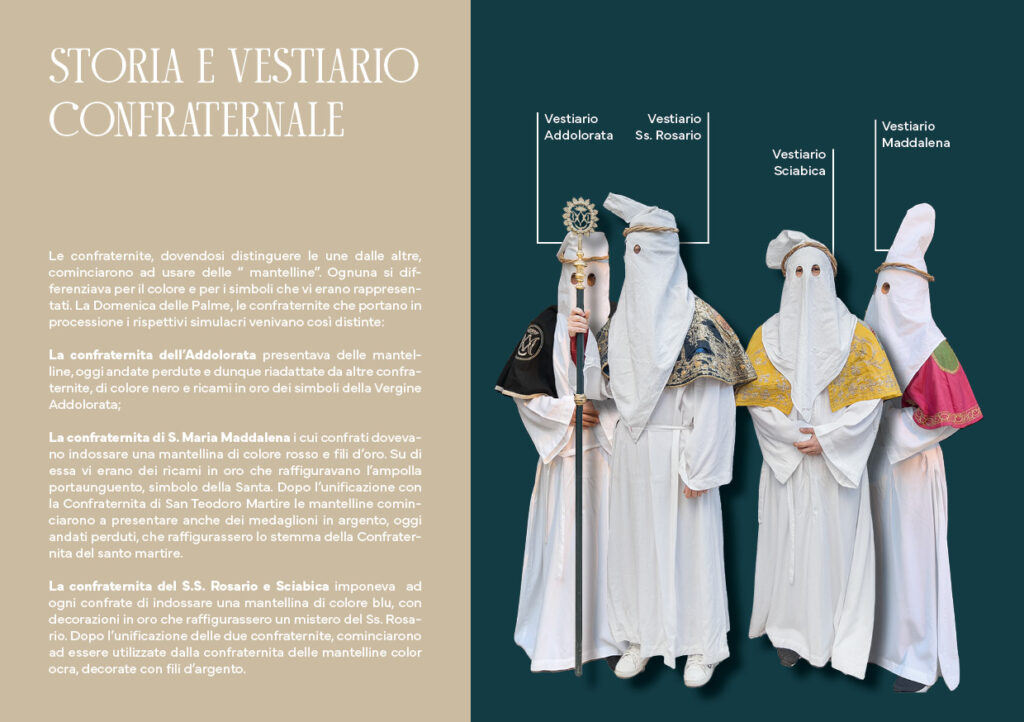Each brotherhood differed from one another in the way in which they worked to provide charity and charity and in their devotion towards one or more religious figures.
They are distinguished from each other by the different coloring and and decoration present in their capes and their statues or statuary group that is used during Holy Week for the rites of the mysteries of the passion of Christ.
The rite of Holy Week in Ragusa was born around the end of 1300 and for about 10 years it has been included in the register of intangible assets to be safeguarded and therefore protected by UNESCO.
Since 1300 each brotherhood, during Holy Week, has a specific day and time to go in procession with its statue.
Starting from the church where it is located, they head towards the Cathedral, where the Eucharistic celebrations are held inside in their honor, at the end of which they move, always in procession, towards their home location.
Only on Good Friday are all the brotherhoods obliged to participate in the very long and heartfelt procession, which branches out from the Cathedral through all the streets of the ancient historic center of the city (Ibla), with the statues of the dead Christ and of ” Addolorata ” Our Lady of Sorrows

the SS. Addolorata is the most prestigious brotherhood. In fact, one of the essential requirements to become part of it is to be noble, therefore a purely noble brotherhood.
One of the most important brotherhoods is that of San Giacomo, elevated to “arch-confraternity” in 1700, after the visit to Ragusa of the bishop of Syracuse Asdrubale Termini who appreciated the great commitment made to first rescue and then help, in the reconstruction, the victims of the terrible earthquake of 1693 which destroyed the entire Val di Noto.
The bishop, convinced that the “simple” elevation of role was too little, decided to give them very important privileges: being able to place the statue of the Patron Saint George above the main door of their church.
A concession that might seem like a small thing but it is not, since the canonical law requires only statues of Christ or the Madonna to be placed on the main doors of churches.

The only brotherhood that has no longer existed for about 80 years is that of Sant’Agnese. It was responsible for carrying in procession on Holy Wednesday a statue from the Spanish era dating back to the late 1400s and early 1500s of a flagellated Christ sitting on a “stump”.
Once they have disappeared, obviously the procession also disappears, thus leaving a “hole” during the Holy Week in Ragusa.
The Sicilian brotherhoods did not only represent a religious event but also a historical, social and cultural one, becoming one with the history of this people and making them, even today, secular associations guaranteeing ecclesial, anthropic, cultural traditions and a still enjoyable artistic past.

